This post comes from Alena Temnikova, Pure Earth’s regional coordinator in Kyrgyzstan.
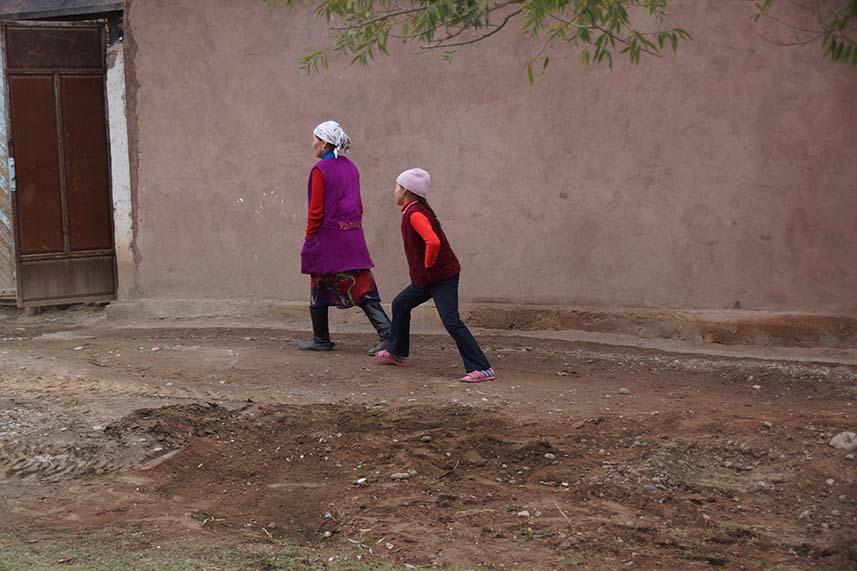 The red wall of the building is made from lead-contaminated sand taken from the mine tailings.
The red wall of the building is made from lead-contaminated sand taken from the mine tailings.
When lead and zinc ore mining began in the 1950s, the first workers lived in tarpaulin tents and barracks. Then houses were built and the town of Sovetskoe (recently renamed Kan) was established as a working settlement. Kyrgyz, Uzbek, Russian, Tajik, Tatar, and Korean miners came to work in Sovetskoe, located in the Batkensky region of Kyrgysztan.
While the mine and the factory that processed the ores have long closed, what remains is a vast amount of lead contaminated mine tailings–a toxic legacy that continues to poison the community.
About 11 hectares of mine tailings remains on the east side of town. When the wind blows, lead-contaminated dust from the tailings is carried to the town.
Practically every family uses the sand from the tailings as construction material to build their homes. And little children play and crawl in the piles of contaminated red sand on the dusty road.
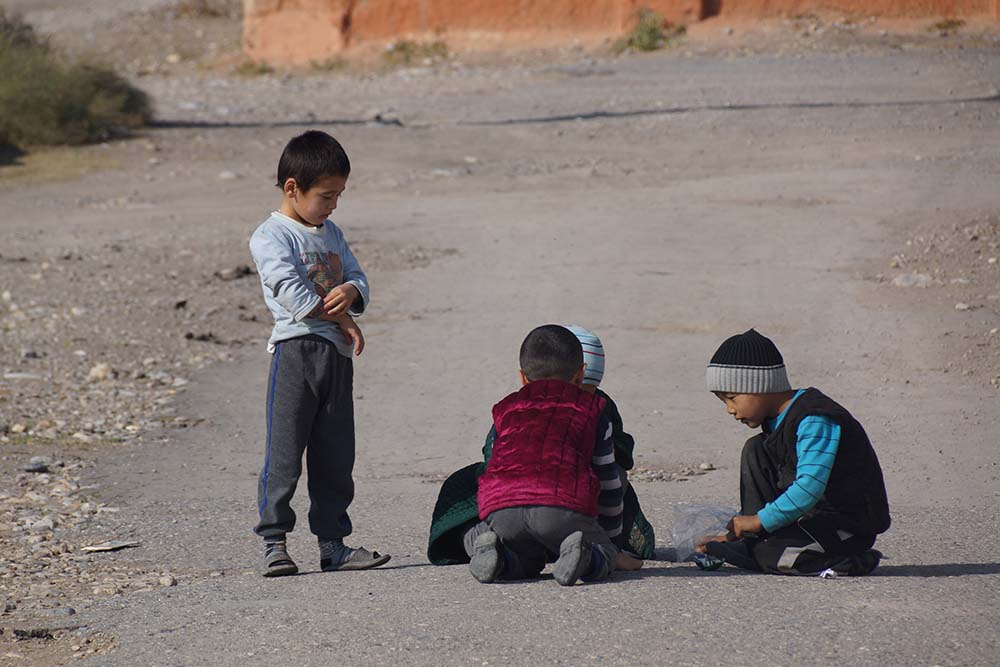
Sovetskoe is very distant from other settlements. You would have to drive about 50 km on the dirt road from the main highway to get there. Local people live isolated from the other settlements in the region.
Sabina, whose granddaughter is studying in second grade in school, told us about life in town and showed us her house.
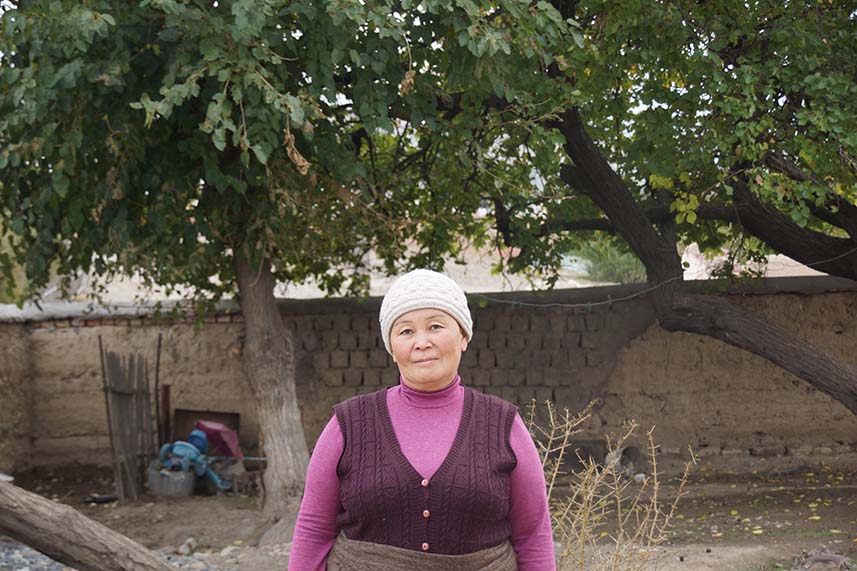
Sabina:
Locals cultivate vegetables, fruits, keep livestock. People are very friendly here–everybody knows each other and are always happy to help.
My husband passed away two years ago, my daughter went to Russia to earn money because there are no jobs here. My granddaughter stays with me. I bring her up alone.
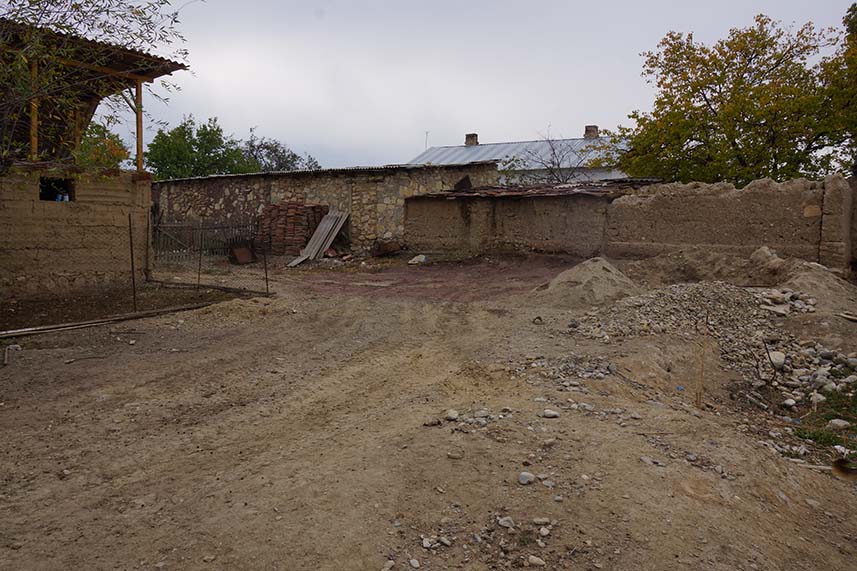
She showed us her her yard:
Here was a pile of sand. I made plaster from it, covered walls with it, then painted it. Of course my granddaughter played here – every child did. I wish I knew about the dangers of that sand before! We would have never done it if we only knew! Certainly I will bring in new clean sand. That dirty sand has been already taken out.
The dog called Mainok was lying on the contaminated pile. The reddish hue of the ground is a clue that it contains lead-contaminated sand from the tailings.
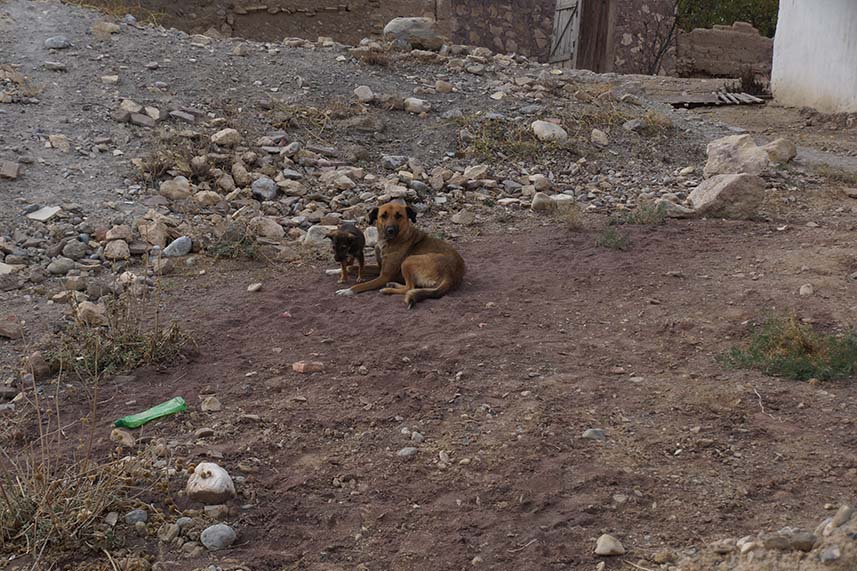
Sabina showed us a lamb in the corral:
It lives here alone. It is very weak. It lags behind herd. Maybe because of lead?
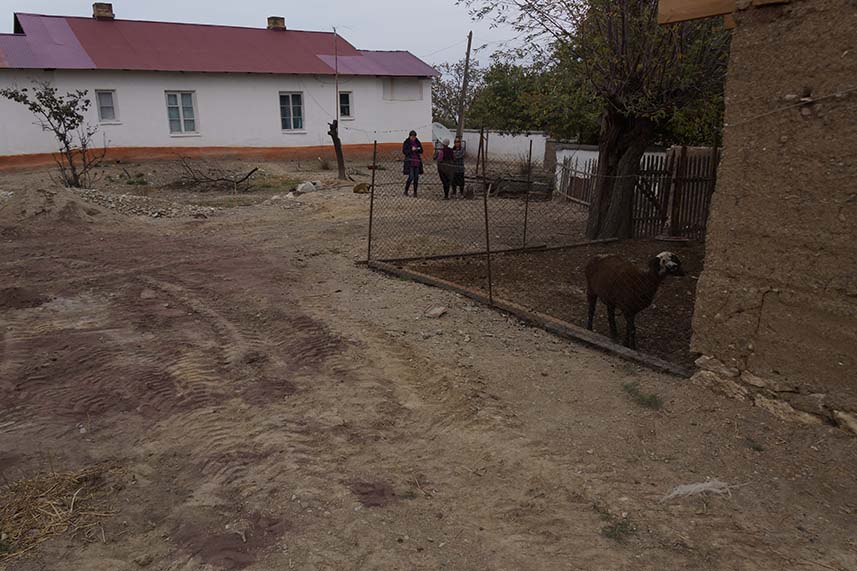
There were the remains of some buildings near the fence of the house. Sabina said that they were walls of former workrooms made with the sand from the tailings too. Teachers lived there before.
Our town had a bakery, furniture factory where tables, cupboards were made. Then there was a rubber products plant, woodworking shops and even a hotel. But now we do not have any manufacturing here.
Young people try to find job in the capital of Kyrgyzstan (Bishkek) or go to Russia. Some of them go there immediately after the graduation from school. But fortunately they do not forget their native town – every vacation they try to visit their families. Locals go to the market every week where they sell their products. Some of them work in the kindergarten, schools.
In Sovetskoe, toddlers start kindergarten when they are just over a year old, and enter school when they are seven.
The main language in the settlement is Kyrgyz but children begin to study Russian in school. All subjects are in the Russian language. It is important to study it to get job.
In 2006 the school celebrated its 50th anniversary. The staff of the school are very proud of history of the town and they try to save it. Historical pictures are placed at the entrance.
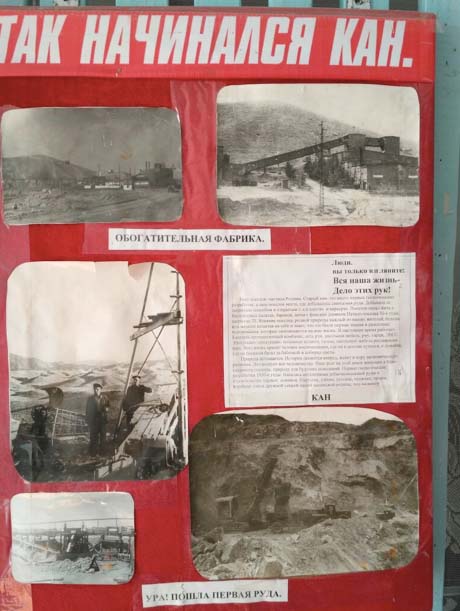
The caption below says “At first ore was mined by hand.”
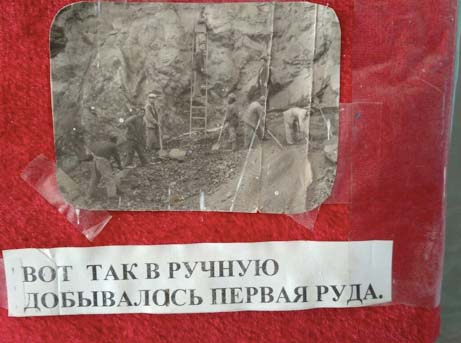
In the senior classes pupils have a choice whether to continue their education in school or enter the technical school. Girls study how to sew there, boys are trained to join the welder profession.
The majority of families have many children. There are traditionally three to four children in a family.
Parents worry about their children’s health. They were terrified by the fact that the sand they used for building their own houses was toxic.
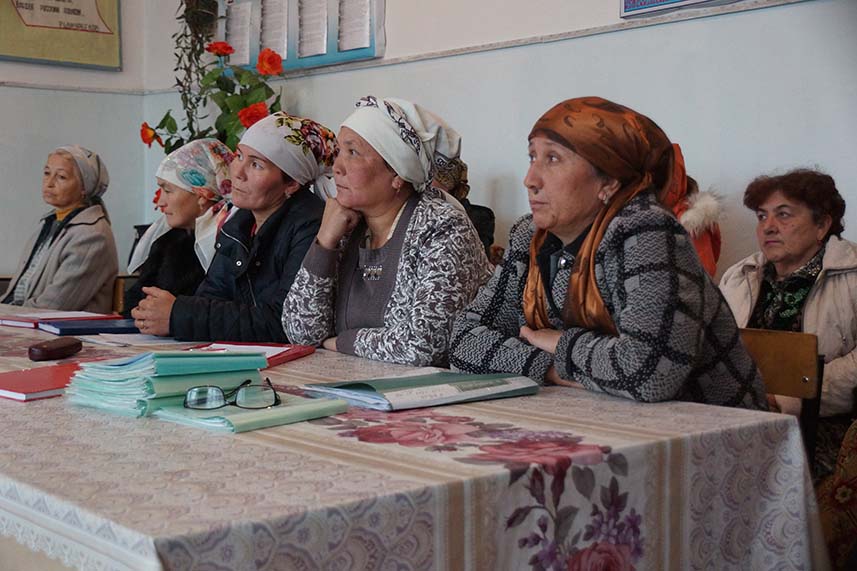 A meeting with school teachers.
A meeting with school teachers.
Unfortunately no one told residents about it. The lack of environmental education created a serious problem. This is why our work here involves educating children as well as parents about the dangers of toxic lead.
The head of the school told us:
Parents of our pupils save vegetables like carrots in that sand during winter. I heard them discussing whether it is harmful for them or not. I am ashamed that I did the same before. I will tell parents and pupils that they shouldn’t do it anymore.
The lake is situated to the east of the tailings. This is artificial lake was made by the flooding of old open cast mines.
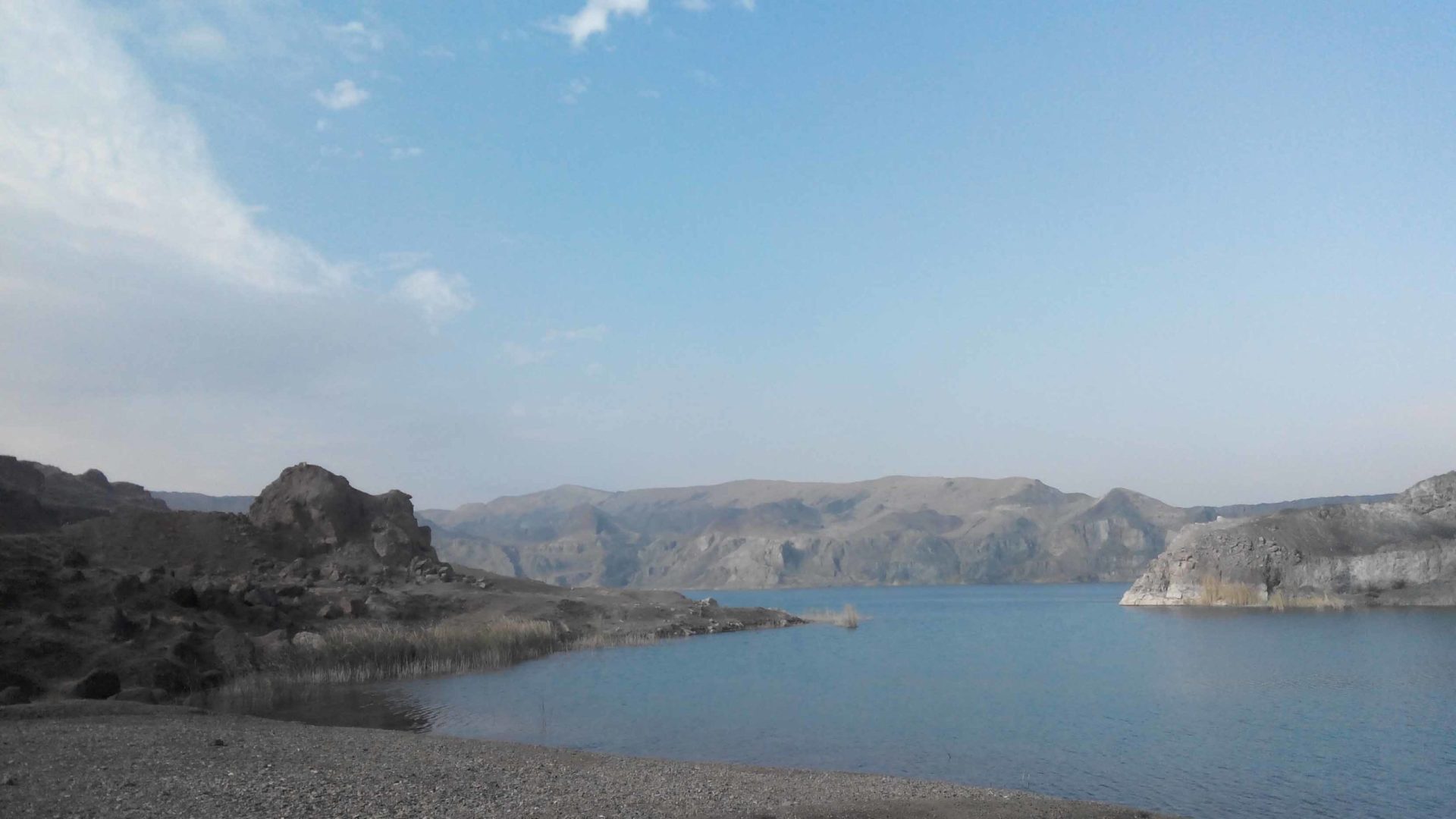
This is a picture of the mine where the lake is located now.
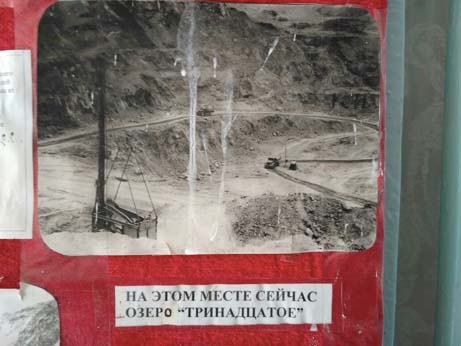
This lake is a popular place for rest and recreation for local residents. The easiest way to get to the lake is to go through the unfenced tailings. This means that toxic lead dust follows residents from the lake back to the town and their homes.
Now that awareness about the town’s toxic legacy is growing, residents see a brighter future. The cleanup of kindergartens and yards have already begun.
This girl below is playing with a clump of clean sand brought in as part of the remediation efforts.
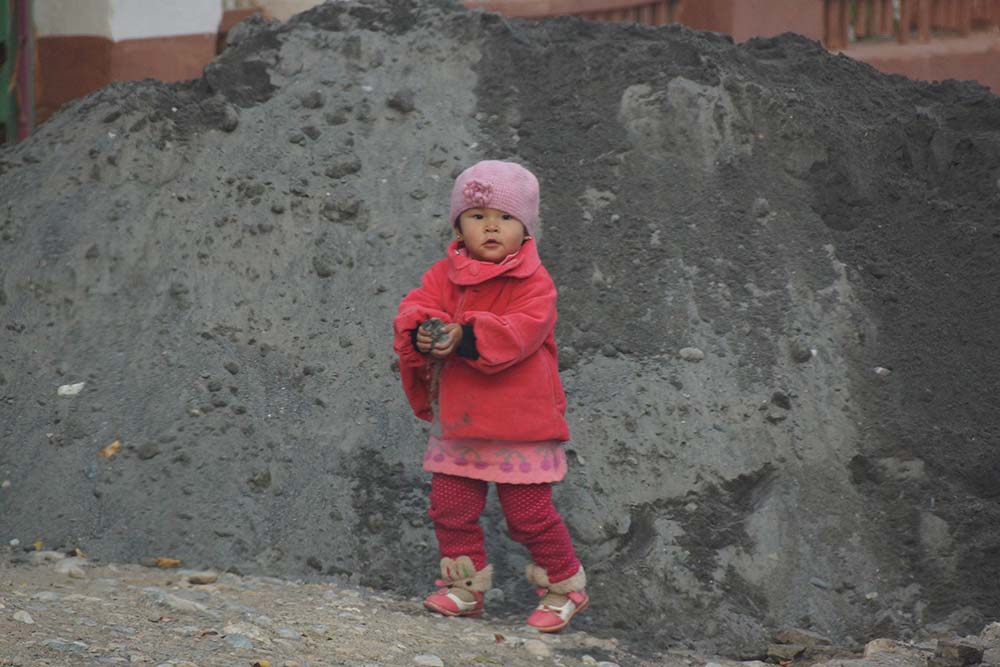
Watch the mayor of Sovetskoe talk about the cleanup.
See the Pure Earth project page for future updates. Watch
This project was made possible with support from UNIDO and the European Commission.



